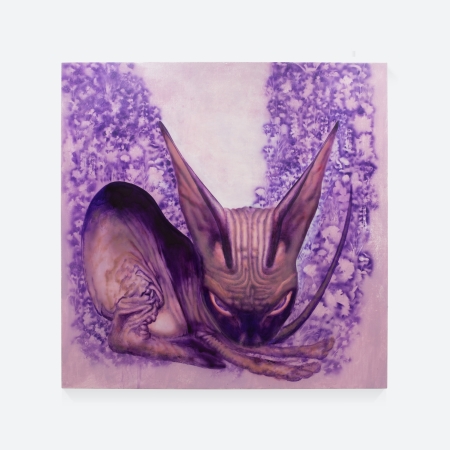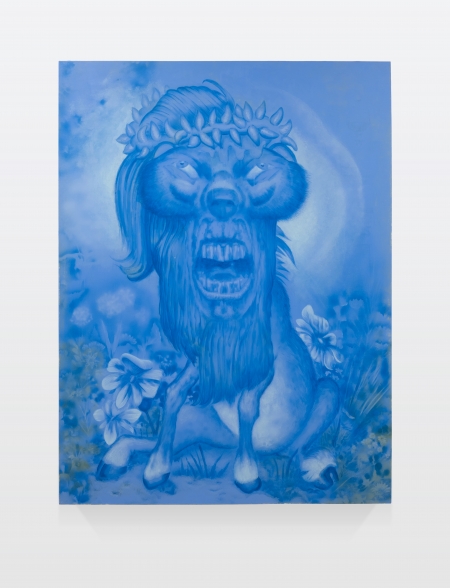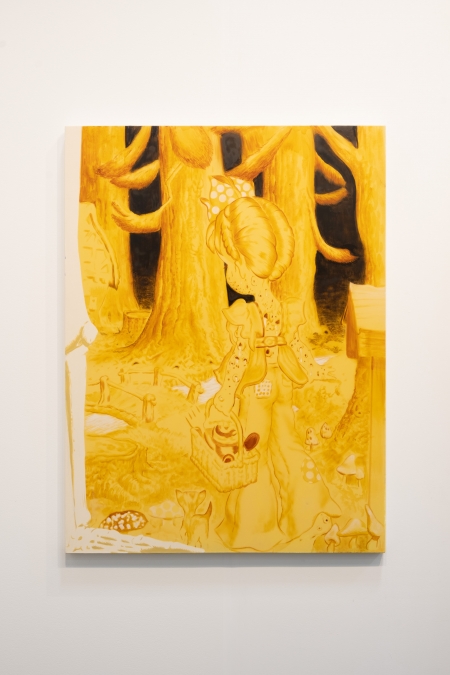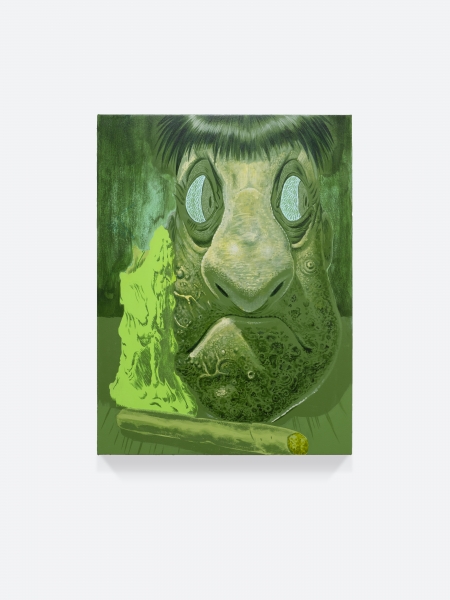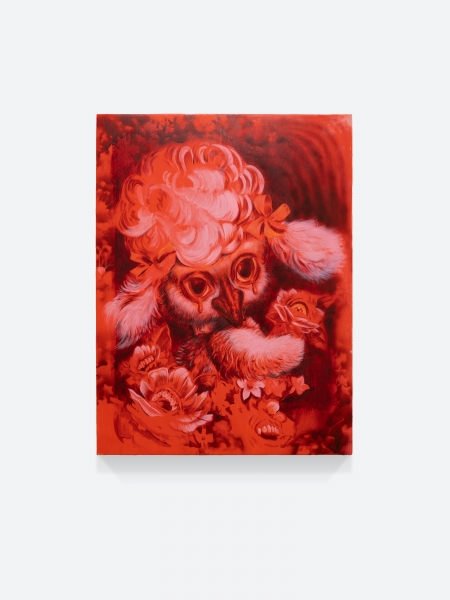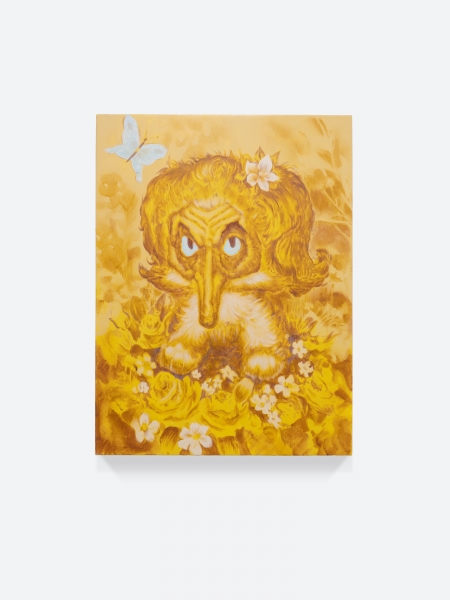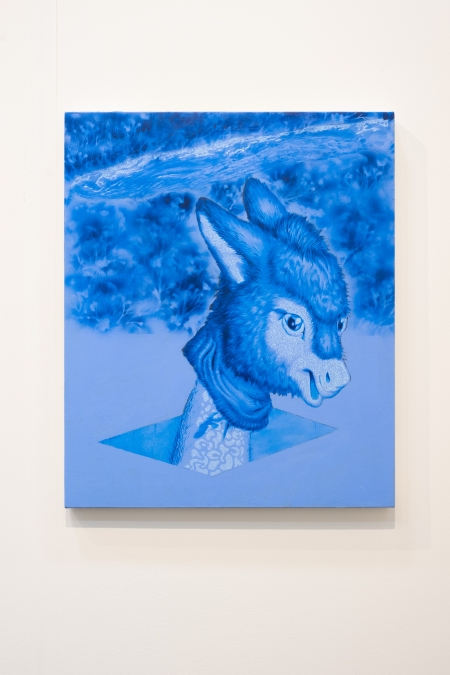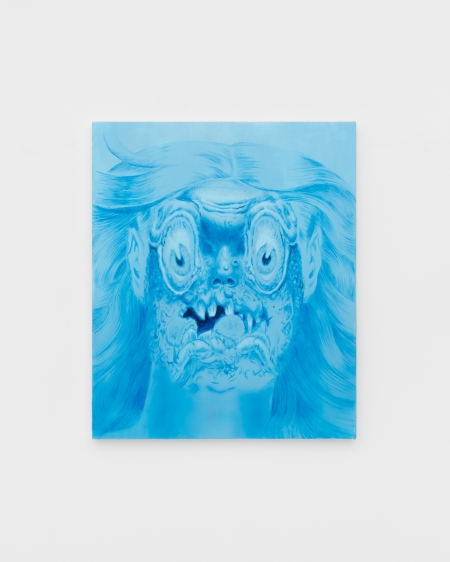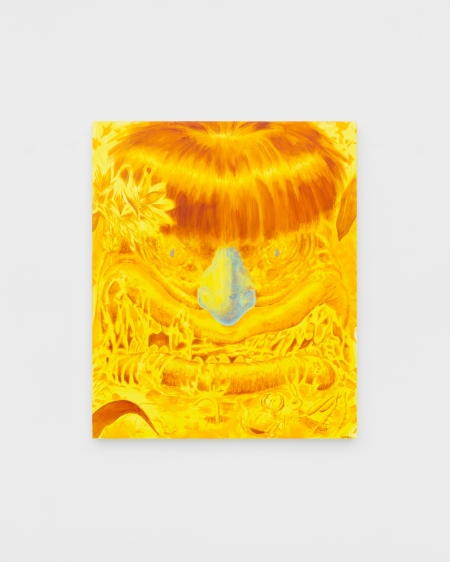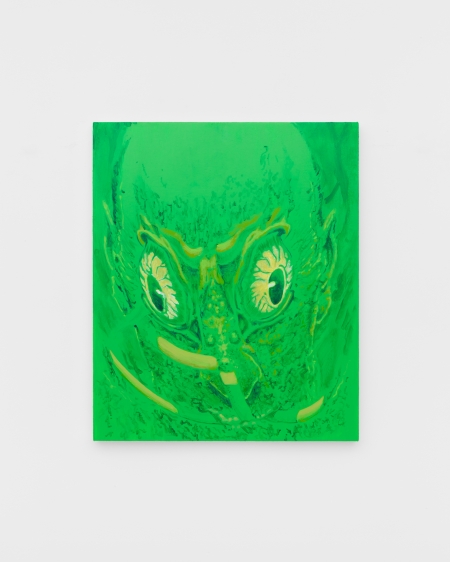Menu
Tim Brawner, hailing from the Midwest and educated at Yale, produces a practice of painting which mines the space between terror and horror, between the uncanny and the grotesque, between satire and sardonic sincerity. Borrowing from a bricolage of cultural iconography, Brawner’s works utilize the idiom of illustration and logic of cartooned cinematics culled through a process of “trolling of the trash stratum of culture” as Brawner states, in order to reveal to the viewer an idiomatic menagerie of quasi-mythological nightmare forms, replete with mirthful laughter as much as the macabre. Here big bad wolves and skulls replete with exaggerated glossy eyes meet zombie forms and troglodyte anti-heroes in a fractured, hypnogogic, hallucinatory landscape, whose ultimate message is profoundly post-humanist. Referencing the work of Francisco Goya’ the artist affirms, “It is not simply that the Sleep of Reason Produces Monsters, but that reason doesn’t realize its sleeping and so is still producing monsters”.
While his portrait works often present the viewer with a reflected horror, the figures with oversized cartoonish eyes recall at once a camp, infantilized pathos and an incisive cultural terror. The demons we create as inheritors of Western Enlightenment thinking are in fact of our own design; the monster is under the bed because we placed them there. Yet likewise in this cinematic mise-en-scene, as the artist produces dystopian confrontations at once eerily familiar and decidedly idiomatic, the works connote a withheld narrative whose pluripotent force lies in a violence lying in wait; as Gilles Deleuze commented of his drive image, one could state in relation to Brawner’s saturated monochromatic grotesque portraits and illustrative scenes. They are images which predicate events, ever present, ever delayed, but ever always already occurred: “This violence is a violence enacted, before engaging in an action. No more tied to an image of action […] but a static violence, the only equivalent […] in literature in Jean Genet, when he describes the extraordinary violence that can inhabit an immobile hand at rest”.
For NADA New York 2022, Brawner’s solo booth for Management (as Fragment NY) will feature approximately nine new works, with special emphasis on monochrome palettes of Red, Yellow, Teal, Blue, Magenta, Green, and Violet, composed in acrylic on canvas in dimensions from the intimate 18”x24” to the confrontational 60”x60”.
